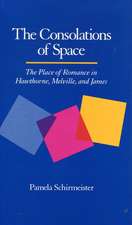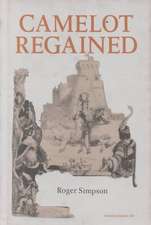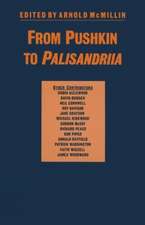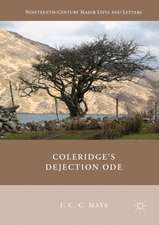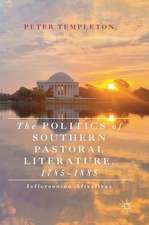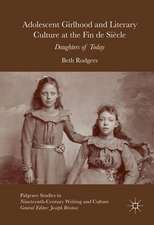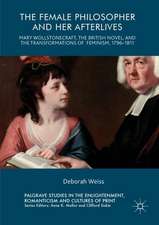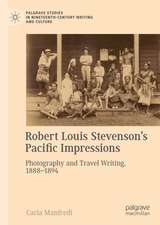The Literary Heritage of the Environmental Justice Movement: Landscapes of Revolution in Transatlantic Romanticism: Literatures, Cultures, and the Environment
Autor Lance Newmanen Limba Engleză Paperback – 3 mai 2019
| Toate formatele și edițiile | Preț | Express |
|---|---|---|
| Paperback (1) | 523.22 lei 6-8 săpt. | |
| Springer International Publishing – 3 mai 2019 | 523.22 lei 6-8 săpt. | |
| Hardback (1) | 528.48 lei 6-8 săpt. | |
| Springer International Publishing – 8 mai 2019 | 528.48 lei 6-8 săpt. |
Din seria Literatures, Cultures, and the Environment
- 18%
 Preț: 624.51 lei
Preț: 624.51 lei - 20%
 Preț: 692.35 lei
Preț: 692.35 lei -
 Preț: 388.72 lei
Preț: 388.72 lei -
 Preț: 386.81 lei
Preț: 386.81 lei - 15%
 Preț: 582.95 lei
Preț: 582.95 lei - 18%
 Preț: 727.97 lei
Preț: 727.97 lei -
 Preț: 385.84 lei
Preț: 385.84 lei - 15%
 Preț: 705.18 lei
Preț: 705.18 lei -
 Preț: 417.30 lei
Preț: 417.30 lei - 18%
 Preț: 950.21 lei
Preț: 950.21 lei -
 Preț: 389.88 lei
Preț: 389.88 lei - 15%
 Preț: 584.58 lei
Preț: 584.58 lei - 15%
 Preț: 521.60 lei
Preț: 521.60 lei - 15%
 Preț: 581.47 lei
Preț: 581.47 lei - 15%
 Preț: 693.25 lei
Preț: 693.25 lei - 18%
 Preț: 887.24 lei
Preț: 887.24 lei - 15%
 Preț: 700.75 lei
Preț: 700.75 lei - 15%
 Preț: 641.71 lei
Preț: 641.71 lei - 18%
 Preț: 786.66 lei
Preț: 786.66 lei - 18%
 Preț: 783.81 lei
Preț: 783.81 lei - 18%
 Preț: 787.15 lei
Preț: 787.15 lei - 18%
 Preț: 950.33 lei
Preț: 950.33 lei -
 Preț: 391.61 lei
Preț: 391.61 lei - 15%
 Preț: 583.13 lei
Preț: 583.13 lei - 18%
 Preț: 1001.32 lei
Preț: 1001.32 lei
Preț: 523.22 lei
Preț vechi: 615.55 lei
-15% Nou
Puncte Express: 785
Preț estimativ în valută:
100.12€ • 104.80$ • 83.33£
100.12€ • 104.80$ • 83.33£
Carte tipărită la comandă
Livrare economică 31 martie-14 aprilie
Preluare comenzi: 021 569.72.76
Specificații
ISBN-13: 9783030145743
ISBN-10: 3030145743
Pagini: 238
Ilustrații: V, 238 p.
Dimensiuni: 148 x 210 mm
Greutate: 0.3 kg
Ediția:1st ed. 2019
Editura: Springer International Publishing
Colecția Palgrave Macmillan
Seria Literatures, Cultures, and the Environment
Locul publicării:Cham, Switzerland
ISBN-10: 3030145743
Pagini: 238
Ilustrații: V, 238 p.
Dimensiuni: 148 x 210 mm
Greutate: 0.3 kg
Ediția:1st ed. 2019
Editura: Springer International Publishing
Colecția Palgrave Macmillan
Seria Literatures, Cultures, and the Environment
Locul publicării:Cham, Switzerland
Cuprins
Chapter One: Landscapes of Revolution.- Chapter Two: Black Nature.- Chapter Three: The Native Wilderness.- Chapter Four: The Green City.- Chapter Five: The Commons.- Afterword.
Notă biografică
Lance Newman is Dean of the School of Arts and Sciences at Westminster College in Salt Lake City, Utah, USA. He is the author of Our Common Dwelling: Henry Thoreau, Transcendentalism, and the Class Politics of Nature (Palgrave, 2005) and co-editor of Transatlantic Romanticism: An Anthology of British, American, and Canadian Literature, 1767-1867 (2006).
Textul de pe ultima copertă
The Literary Heritage of the Environmental Justice Movement showcases environmental literature from writers who fought for women’s rights, native rights, workers’ power, and the abolition of slavery during the Romantic Era. Many Romantic texts take flight from society and enact solitary white male encounters with a feminine nature. However, the symbolic landscapes of Romanticism were often radicalized by writers like Olaudah Equiano, Frederick Douglass, William Apess, George Copway, Mary Wollstonecraft, Lydia Maria Child, John Clare, and Henry Thoreau. These authors showed how the oppression of human beings and the exploitation of nature are the twin driving forces of capitalism and colonialism. In addition to spotlighting new kinds of environmental literature, this book also reinterprets familiar texts by figures like William Blake, Nathaniel Hawthorne, Mary Shelley, William Wordsworth, and Walt Whitman, and it shows how these household figures were writing in conversation with their radical contemporaries.
Caracteristici
Reinterprets familiar Romantic environmental texts in conversation with neglected texts by African American, Native American, and women writers Engages contemporary debates in environmental humanities to extend the “materialist turn” Seeks to inform environmental justice activism today by examining the environmental traditions of the Romantic period





